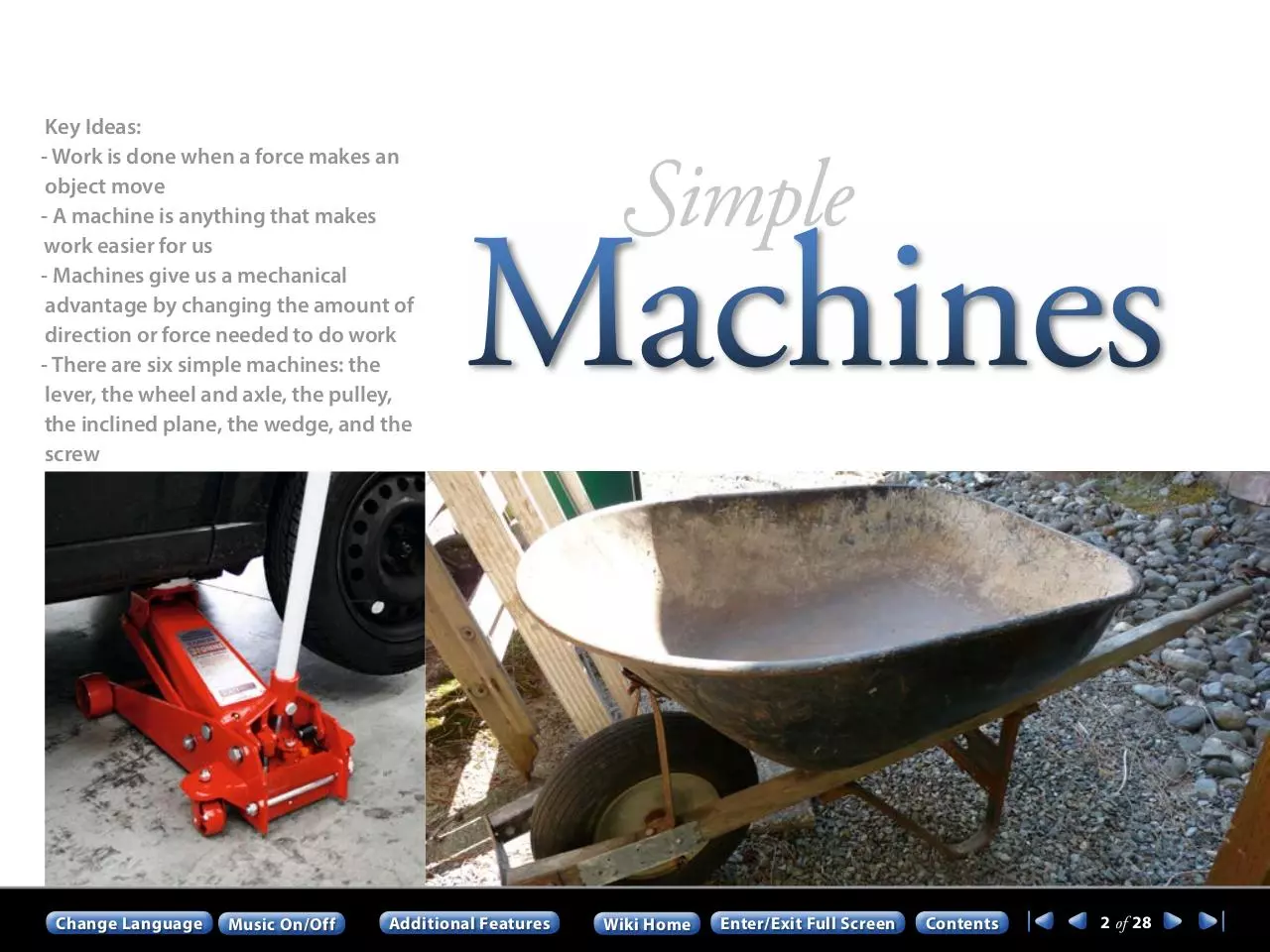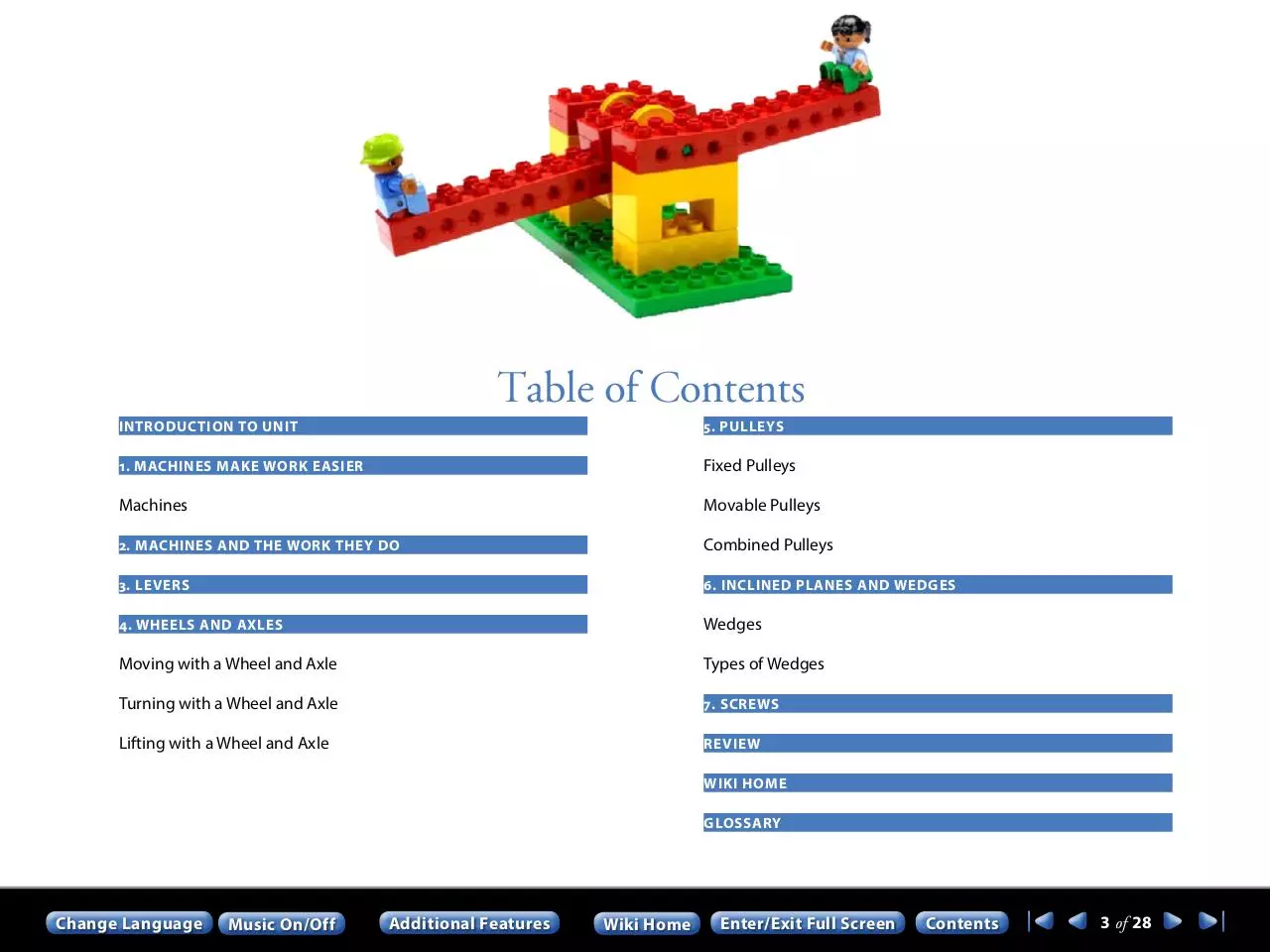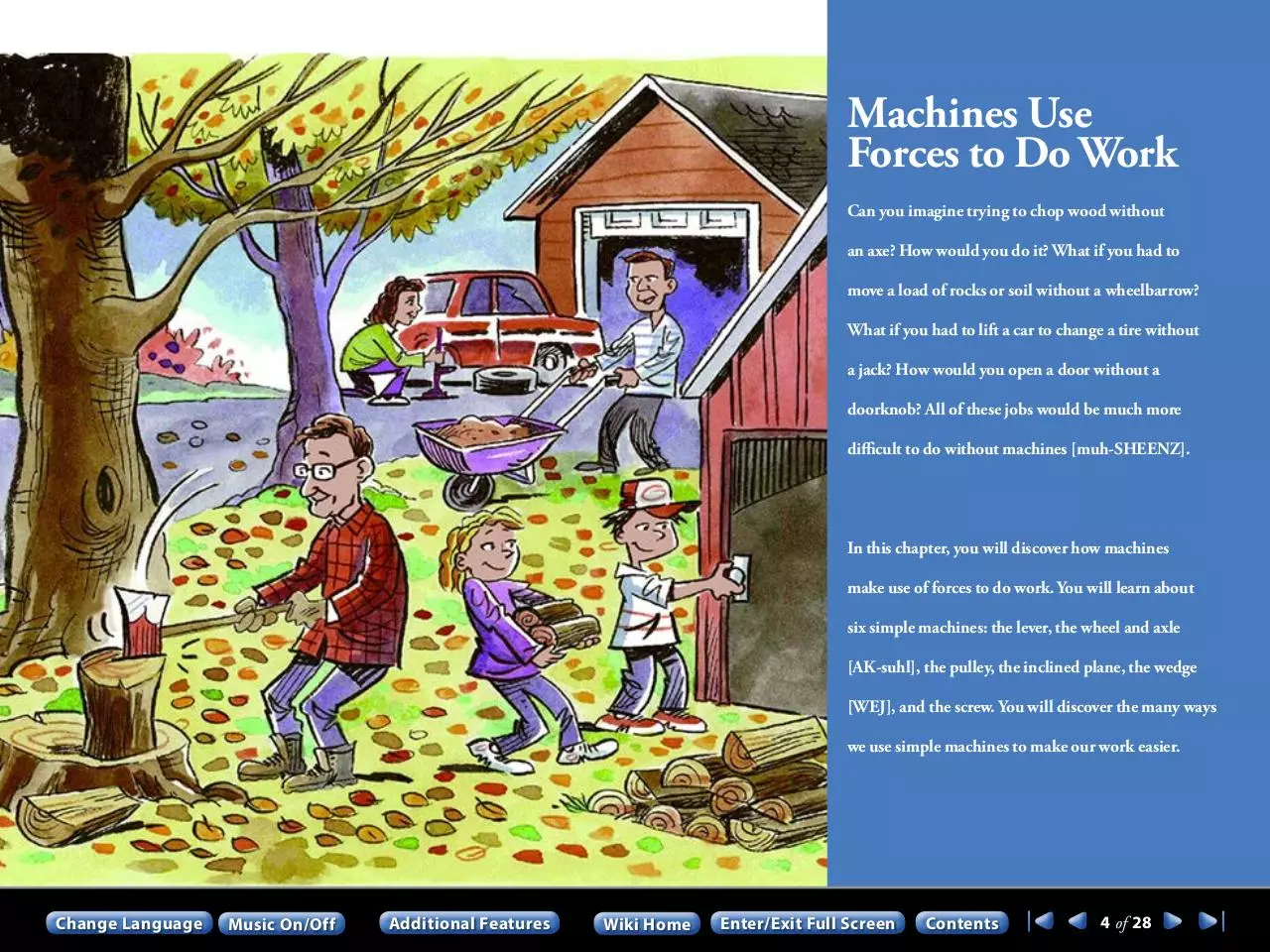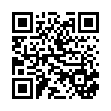ETEC510 eTextbook Design Final 2 (PDF)
File information
This PDF 1.7 document has been generated by Adobe InDesign CS6 (Windows) / Adobe PDF Library 10.0.1, and has been sent on pdf-archive.com on 08/07/2015 at 16:14, from IP address 75.157.x.x.
The current document download page has been viewed 395 times.
File size: 118.41 MB (28 pages).
Privacy: public file





File preview
Forces &
Machines
Simple Machines
Change Language
Music On/Off
Additional Features
Wiki Home
Enter/Exit Full Screen
Contents
1 of 28
Key Ideas:
- Work is done when a force makes an
object move
- A machine is anything that makes
work easier for us
- Machines give us a mechanical
advantage by changing the amount of
direction or force needed to do work
- There are six simple machines: the
lever, the wheel and axle, the pulley,
the inclined plane, the wedge, and the
screw
Change Language
Music On/Off
Simple
Machines
Additional Features
Wiki Home
Enter/Exit Full Screen
Contents
2 of 28
Table of Contents
introduction to unit
5. pulleys
1. Machines Make Work Easier
Fixed Pulleys
Machines
Movable Pulleys
2. Machines and the work they do
Combined Pulleys
3. Levers
6. inclined planes and wedges
4. Wheels and axles
Wedges
Moving with a Wheel and Axle
Types of Wedges
Turning with a Wheel and Axle
7. Screws
Lifting with a Wheel and Axle
Review
Wiki home
Glossary
Change Language
Music On/Off
Additional Features
Wiki Home
Enter/Exit Full Screen
Contents
3 of 28
Machines Use
Forces to Do Work
Can you imagine trying to chop wood without
an axe? How would you do it? What if you had to
move a load of rocks or soil without a wheelbarrow?
What if you had to lift a car to change a tire without
a jack? How would you open a door without a
doorknob? All of these jobs would be much more
difficult to do without machines [muh-SHEENZ].
In this chapter, you will discover how machines
make use of forces to do work. You will learn about
six simple machines: the lever, the wheel and axle
[AK-suhl], the pulley, the inclined plane, the wedge
[WEJ], and the screw. You will discover the many ways
we use simple machines to make our work easier.
Change Language
Music On/Off
Additional Features
Wiki Home
Enter/Exit Full Screen
Contents
4 of 28
1. Machines
Make
Work
Easier
When you roll a ball of snow to make a snow person, you are doing work.
Has your teacher ever asked you to get to
work? Does it seem like work when you ride
a bicycle up a hill? We use the word “work” to
mean different things. When scientists use
the word “work,” they mean something very
specific.
In science, you are doing work when you use
force to make something move. For example, you are doing work when you roll a large
ball of snow to make a snow person. You are
Change Language
Music On/Off
Additional Features
applying force
to an object that
causes that object
to move. The
amount of work
you do depends
on the amount of
force you use and
the distance the
Watch this video of “work” in action!
object moves.
Subtitles On/Off Descriptive Video On/Off
Wiki Home
Enter/Exit Full Screen
Contents
5 of 28
The force that is needed to
push, pull, or lift an object is called
the effort force .
The force that is holding the object in
place is called the load force. To make
an object move, a machine must work
harder than the load force.
The stairs to the tree house gives this student a mechanical advantage. She uses less effort force than
the student climbing the rope to the tree house.
Machines
A machine makes work easier to do. A pencil
sharpener is a machine that helps you sharpen
a pencil more easily than you could without
using it. Using a machine does not usually
mean that you do less work. It usually means
that you do the work using less effort.
When a machine makes work easier, we
say that it gives us a mechanical advantage [muh-KAN-uh-kuhl ad-VAN-tij]. The
machine gives us a mechanical advantage because it allows us to use less force
or to change the direction of the force
that is needed to do work.
Click to Check
Your Understanding
Share:
Change Language
Music On/Off
Additional Features
Wiki Home
Enter/Exit Full Screen
Contents
6 of 28
2. Machines
and the
Work
They Do
Machines can easily do work that humans would find difficult or impossible.
When you apply an effort force to a machine,
the machine uses this force to do the work
more quickly or more easily than you could
have done it without the machine. Think of the
weight that this giant crane can lift. An effort
force is applied to the crane to help it lift the
container.
Machines don’t have to be big or complicated
to do work for us. If you’ve used a wheelbarrow,
Change Language
Music On/Off
Additional Features
you know it allows you to move heavy objects
more easily than you could move them with
your arms alone. In fact, all machines—no matter how complicated they are—are combinations of six simple machines.
The six simple machines that are used to make
all other machines are:
Wiki Home
Enter/Exit Full Screen
Contents
7 of 28
• the lever
• the wheel and axle
• the pulley
• the inclined plane
• the wedge
• the screw
Simple machines can provide a mechanical
advantage by changing the effect of the effort
force you use. Some simple machines make
work easier by allowing you to use less effort
force to move an object. For example, you use
less effort force to lift a car using a jack than
you would if you tried to lift the car on your
own. Some simple machines make work easier by changing the direction of a force. If you
use a rope thrown over a tree branch to lift
an object, you pull down on the rope but the
object moves up. Simple machines can also
move forces from one place to another. The
chain on a bicycle moves the effort force from
the pedals to the wheels of the bicycle.
Lever
Wheel and Axle
Pulley
Inclined Plane
Wedge
Screw
We use simple machines to move things, to lift things, to hold things together, or to push things
apart. Which machines on this page are used to move things? Which machines are used to lift
things, to hold things together, or to push things apart?
Change Language
Music On/Off
Additional Features
Wiki Home
Enter/Exit Full Screen
Contents
8 of 28
Simple machines change the effect of the effort force you use.
Click to Check
Your Understanding
In this video, what simple machines can you identify in this tool?
Subtitles On/Off
Change Language
Share:
Descriptive Video On/Off
Music On/Off
Additional Features
Wiki Home
Enter/Exit Full Screen
Contents
9 of 28
Download ETEC510 - eTextbook Design Final-2
ETEC510 - eTextbook Design_Final-2.pdf (PDF, 118.41 MB)
Download PDF
Share this file on social networks
Link to this page
Permanent link
Use the permanent link to the download page to share your document on Facebook, Twitter, LinkedIn, or directly with a contact by e-Mail, Messenger, Whatsapp, Line..
Short link
Use the short link to share your document on Twitter or by text message (SMS)
HTML Code
Copy the following HTML code to share your document on a Website or Blog
QR Code to this page

This file has been shared publicly by a user of PDF Archive.
Document ID: 0000285710.